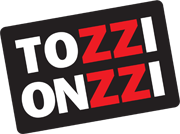During this time, the prison system was very different from today. Prisons were overcrowded and lacked proper rehabilitation programs, and the focus was mainly on punishment rather than reform. As a result, many prisoners were released back into society without any support or resources to help them reintegrate.

Halfway houses designed for people in early stages of recovery provide more resources and structure
than
three-quarter houses, which are sober living homes for people who have a longer history of sobriety. There are various options to consider when looking for a drug-free living environment. However, there are significant differences between halfway houses, sober homes, and rehab centers. Selecting the right option for yourself or a loved one will come down to the specific treatment options you may need and the stage of addiction recovery. Some halfway houses are dedicated to help people who have completed addiction treatment.
Halfway Houses vs. Sober Living Homes
Researching the staff’s credentials and experience in addiction, mental health, and alcohol addiction treatment. The focus on reintegration into the community is another way transitional housing differs from other types of rehabilitation. A halfway house’s mission is to assist inhabitants in successfully transitioning back into the community, as opposed to treatment facilities or other institutions. Because of their emphasis on reintegration, halfway houses stand out from different types of rehabilitation and are an excellent resource for people who need assistance. To understand why halfway houses are called that way, we must go back to the 19th century.
- Some are on the campus where drug and alcohol addiction treatment is provided, and others are independent homes, apartments or condos.
- In some cases, insurance will cover a stay at a halfway house, depending on the facility.
- Imagine walking down a dark alley alone versus with a group – it feels different.
- Today, halfway homes are essential to the care network for those requiring rehabilitation and support assistance.
Besides staying clean, adhering to curfews set by the house management is mandatory. Not sticking with these time limits can attract penalties such as fines or removal from the residence. It’s essential to remember that recovery is a journey, and picking the right halfway house can significantly impact success in the long run. Amanda is a prolific medical content writer specializing in eating disorders and addiction treatment. She graduated Magna Cum Laude from Purdue University with a B.S. “Aftercare” is what happens both during and after your initial rehab program.
Rehab Programs
For many, this makes all the difference when it comes to recovery versus relapse. Some people go to a sober house immediately after they get out of rehab. They will stay there for three to nine months after they get out of treatment.
Laundry, meal preparation, doing the dishes, cleaning the house, gardening, and raking leaves are examples of such chores. The services and resources a halfway house provides depend on the type of operator, the purpose of the residence and the
types of residents who live there. In general, halfway houses have strict rules, accountability tests and resources to
aid residents.
What is the Purpose of a Halfway House?
In some cases, residents may be denied access to certain privileges, such as phone calls to a loved one. Residents are responsible for keeping one another in check so that they won’t face these consequences. Halfway houses are very similar to other sober-living residences, and it’s no surprise one twelve halfway house that people often confuse them. Returning to regular life after rehab is a difficult transition for many. BetterHelp can connect you to an addiction and mental health counselor. Use online resources at IRS.gov to get answers to tax questions, check a refund status or pay taxes.
- While some accommodations provide bedrooms that two or three people can share, others provide larger rooms that are furnished with bunk beds to accommodate more residents.
- The rule here is that you have to commit to a drug and alcohol-free living space.
- The first step of the 12-step program is admitting your powerlessness over your addiction.
- Residents can expect random drug testing or alcohol screening to show that they are still sober.
- Residential treatment programs are those that offer housing and meals in addition to substance abuse treatment.
There’s no wait time or appointment needed — online tools and resources are available 24 hours a day. The IRS’ Interactive Tax Assistant tool and Let us help you resources are especially helpful. WASHINGTON —The Internal Revenue Service today offered a checklist to help taxpayers as they prepare to file their 2023 tax returns during filing season. You might ask, “How do we support their transition while respecting their space?

